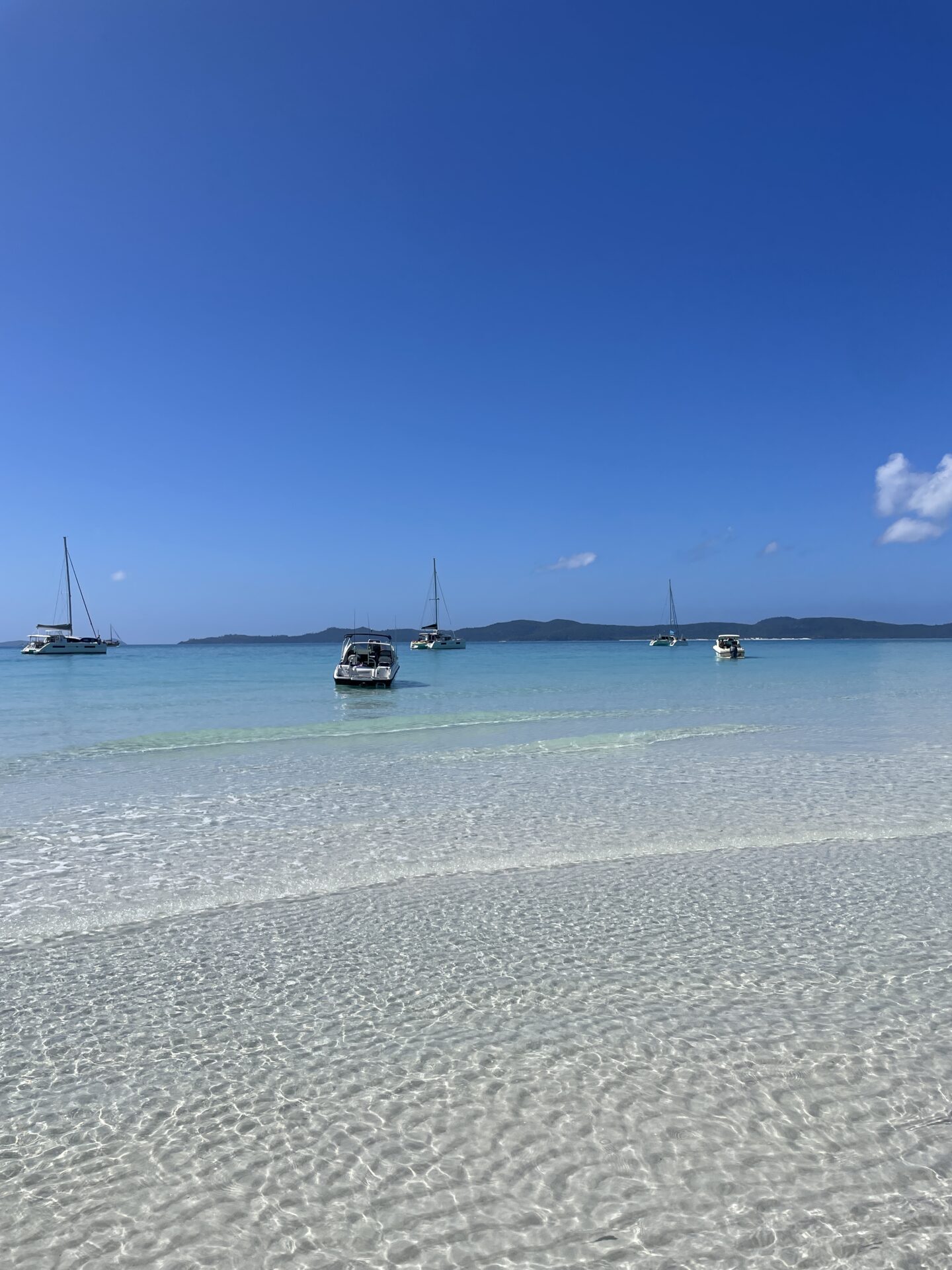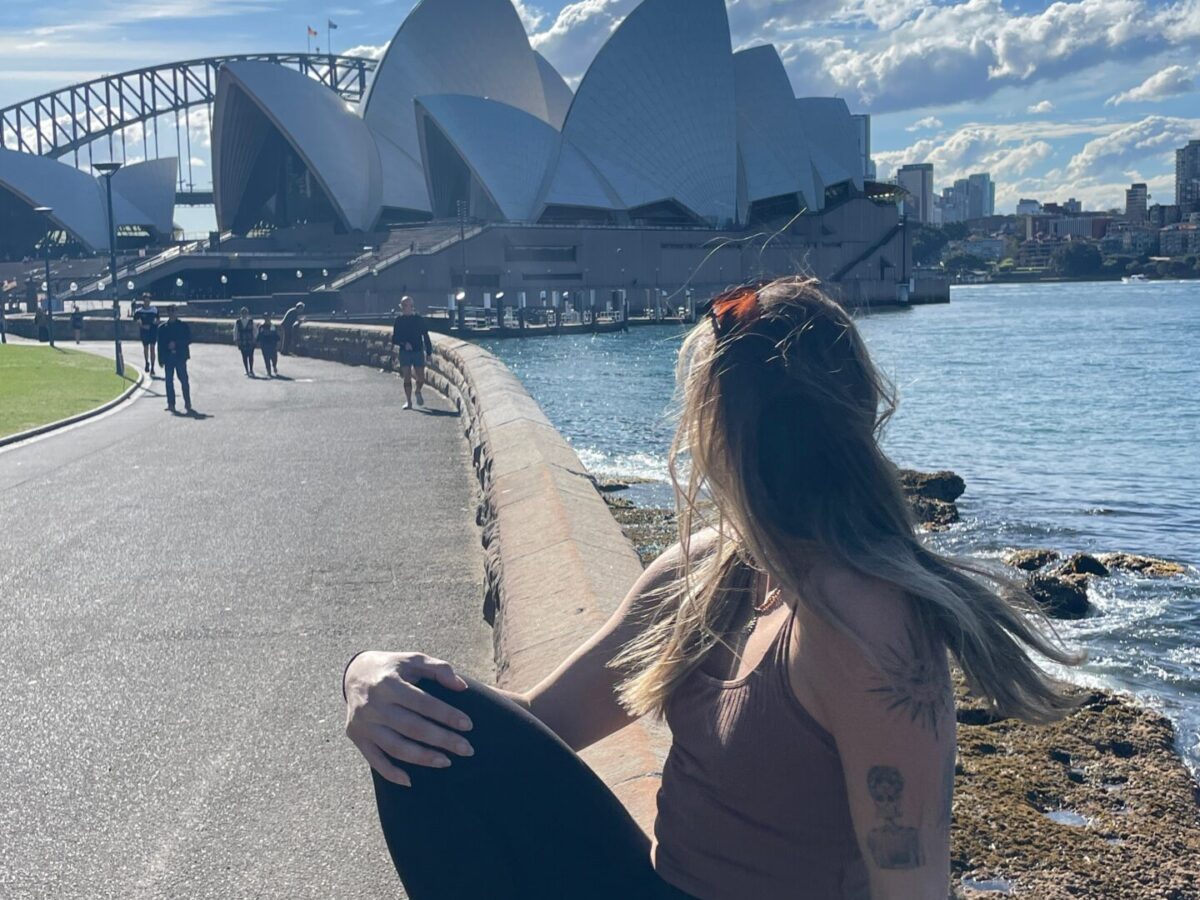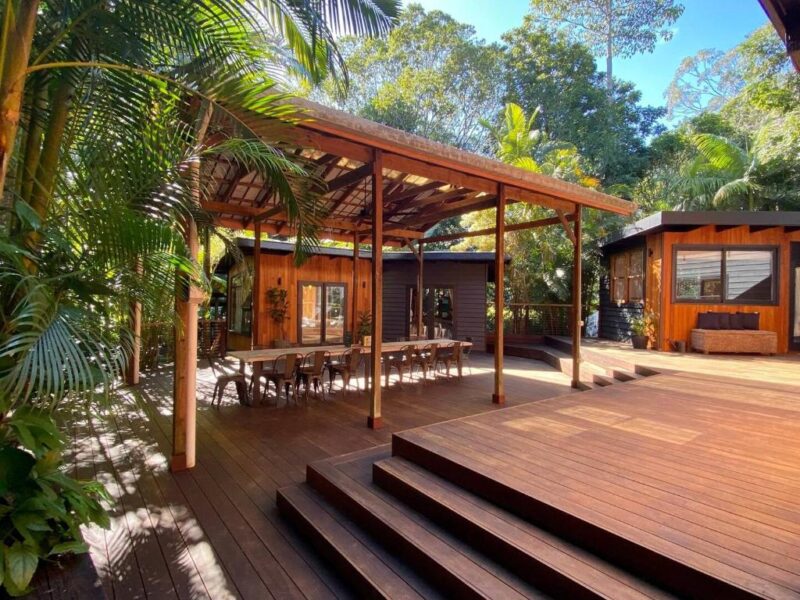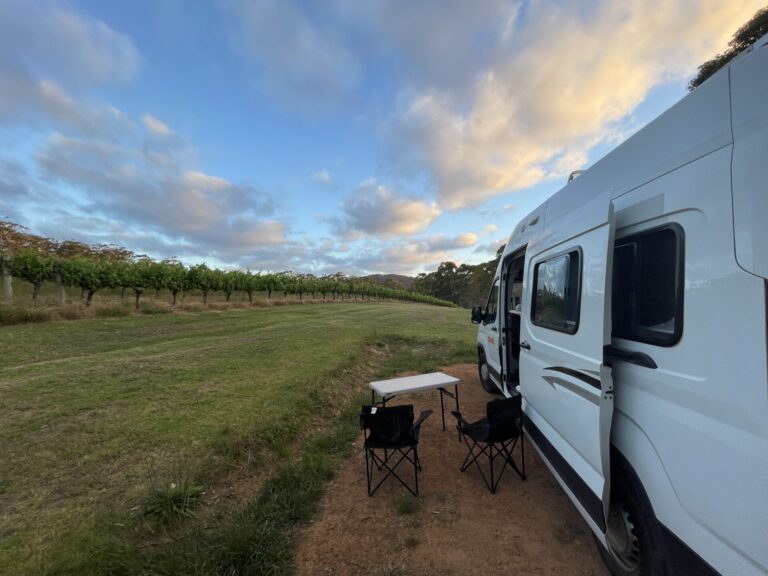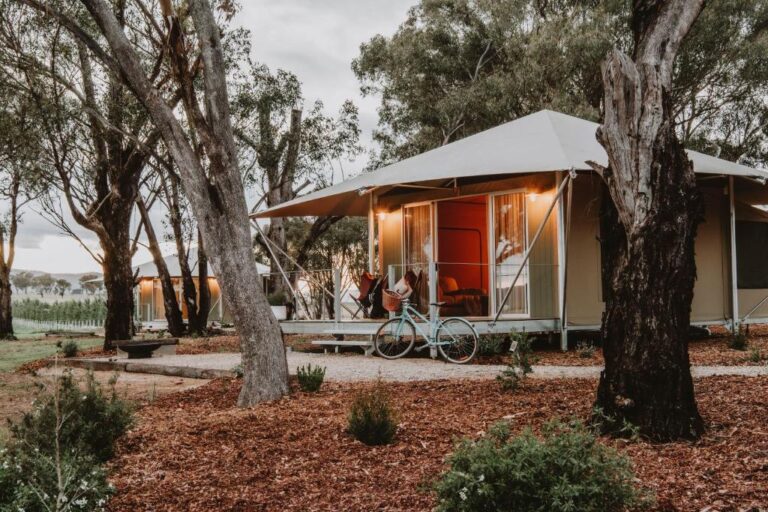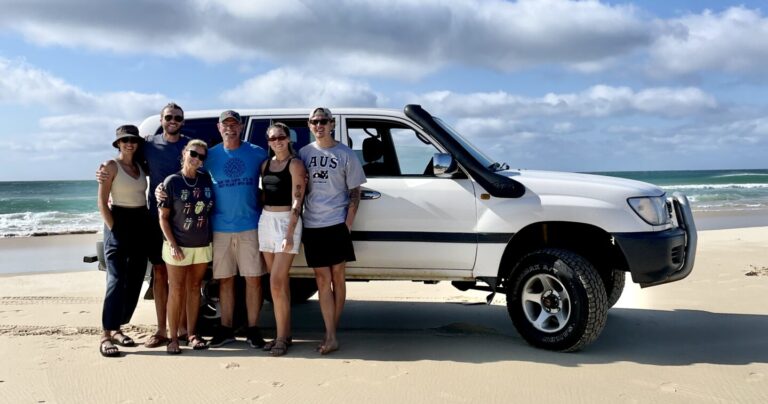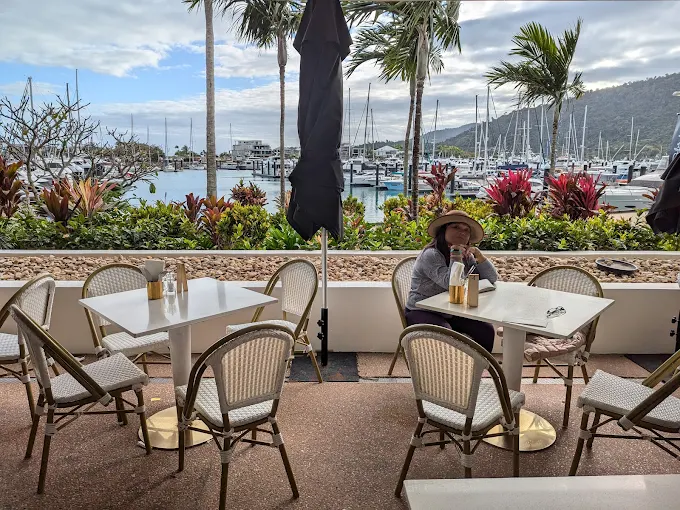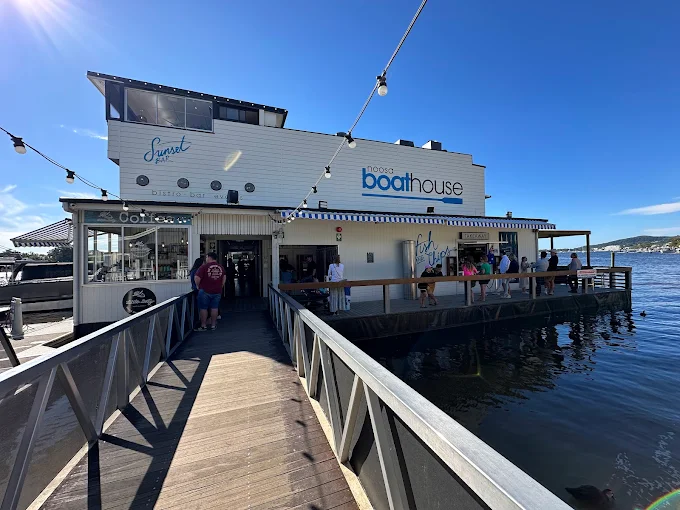Best Time to Visit Whitsundays Islands: A Month-by-Month Breakdown 2025
Last year, Oliver and I were planning our East Coast road trip to celebrate my 30th birthday. Since my birthday is in August, I was a little worried it might end up being a cold, rainy trip, especially coming from winter in Perth, where the weather isn’t exactly in a party mood that time of year.
But thankfully, Australia is massive, and the climates vary a lot more than I’d realized. August turned out to be the perfect time to visit the Whitsundays. The sun was shining, the skies were clear, and we even spotted whales breaching off the coast. No stinger suits in sight, and best of all, no sign of cyclone season.
If you’re wondering when the best time to visit Whitsundays islands is, the truth is: the Whitsundays are stunning year-round, but each season brings something a little different. In this guide, I’ll walk you through what to expect each month, including weather, crowds, pricing, and a few moments from our trip that made it extra special.
In a Rush? Here Are Our Favorite Hotels in Airlie Beach Australia
⭐️⭐️⭐️ Harbour Cove – Click here for rates & availability
⭐️⭐️ Airlie Beach Eco Cabins – Click here for rates & availability
⭐️ Airlie Beach Holiday Park – Click here for rates & availability
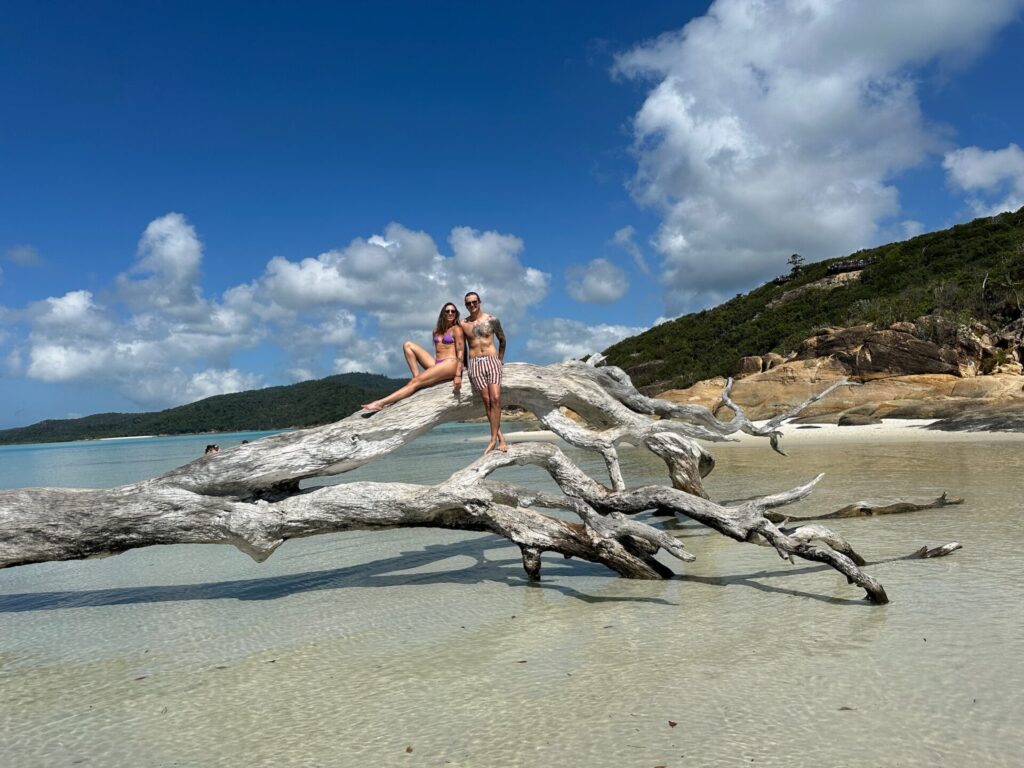


Getting Your Bearings: Where the Whitsundays Actually Are
Because my family was flying in from the US, we wanted to see as much of Australia as possible, but we only had about two weeks in Australia to work with. We started in Sydney, flew to Brisbane, and then road-tripped our way up the East Coast to Cairns. We were in full travel agent mode creating this itinerary!
Now, if you’re familiar with Australia, you know that’s a lot of ground to cover. But somewhere between roadside servo stops and beach detours, we landed in what ended up being one of the biggest highlights of the trip: the Whitsunday Region.
The Whitsunday Islands are tucked off the coast of Queensland, roughly halfway between Brisbane and Cairns. We used Airlie Beach as the jumping-off point, like most people. It’s a lively little town with a backpacker-meets-holiday-maker energy and plenty of places to organize sailing tours, snorkeling trips, or reef flights.
You can also fly into Hamilton Island and explore the Whitsundays from there, but we personally didn’t do that as we didn’t have enough time.
What makes this area so special is that the islands sit right in the heart of the Great Barrier Reef Marine Park, which means: turquoise water, white-sand beaches, and some of the most jaw-dropping reef access you can get without needing to be full scuba-certified.
What’s the Weather in Whitsundays Islands Like
Here’s where it gets interesting: even though the Whitsundays are in tropical Queensland, the weather isn’t the same year-round. There are two main seasons to keep in mind:
- Wet season (roughly November to April): Hot, humid, and often rainy. This is also cyclone season, and it overlaps with stinger season, which means jellyfish nets on beaches and stinger suits for water activities.
- Dry season (roughly May to October): Cooler (but still warm by most standards), lower humidity, and much less rain. This is peak season for travel, and for good reason.
During our August trip, we had consistently sunny weather, with temperatures hovering in the mid-20s (Celsius). It was warm enough to swim, hike, and lounge on the beach, but without the oppressive heat or sudden downpours that can come in summer.
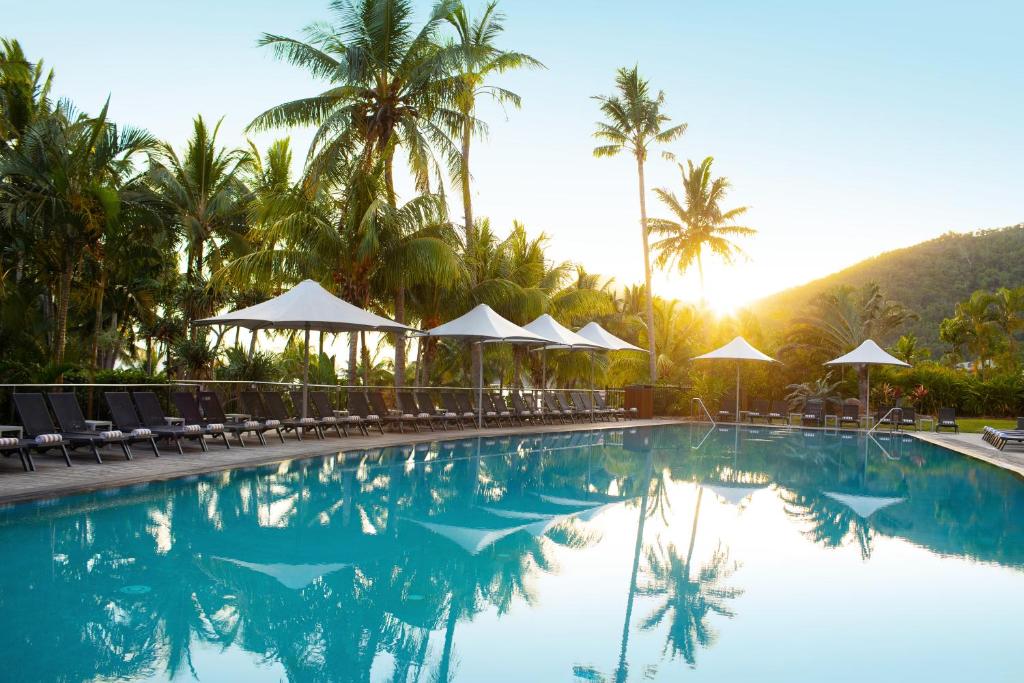
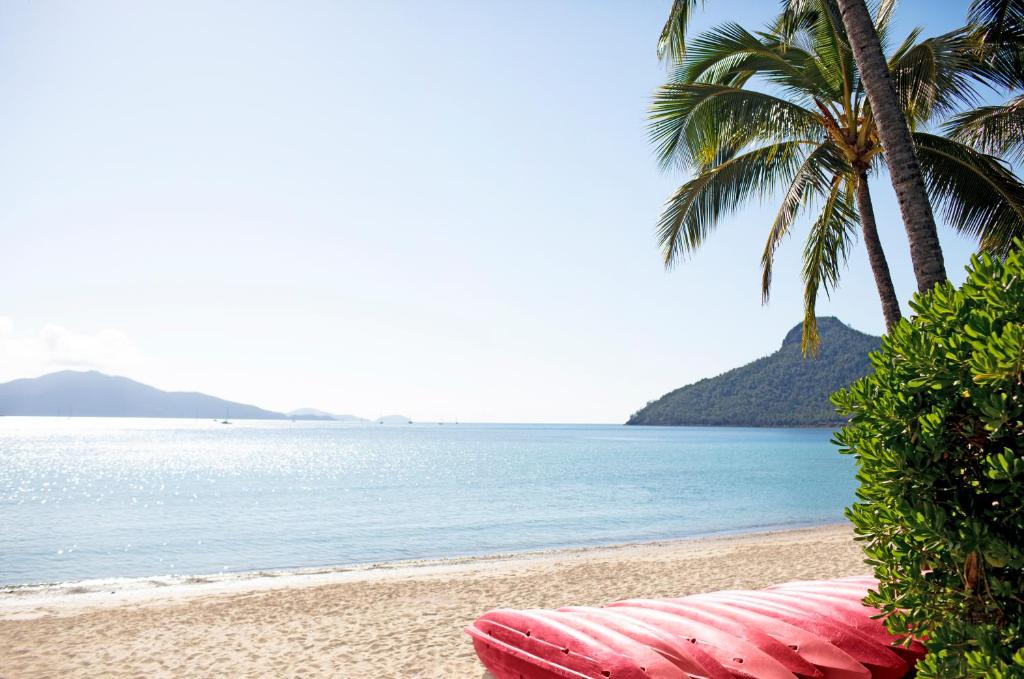
Best Time to Visit Whitsundays Islands: Month-by-Month Guide
December to February (Summer) – Hot, Humid & Hectic
December
December launches the wet season in full swing with hot, humid days and afternoon thunderstorms. School holidays hit peak madness right before Christmas, so expect crowds and high prices. It’s not the ideal time for reef tours or sailing, but if you love tropical storms and don’t mind unpredictable weather, it’s still an adventure.
January
Hot, humid, and deep in the wet season. Expect daily rain, high temps around 30°C, and a chance of cyclones. It’s also peak stinger season, so swimsuits are out and stinger suits are in. The upside is fewer crowds after the New Year holiday rush, but the weather can be unpredictable. Australian school holidays run until late January, so early in the month tends to be busy.
February
Still very wet and sticky with high humidity. Tour prices drop and crowds thin out, but water visibility can suffer if there has been heavy rain. Stingers are still around, so swimming requires extra caution. No school holidays in February, so it’s much quieter overall.
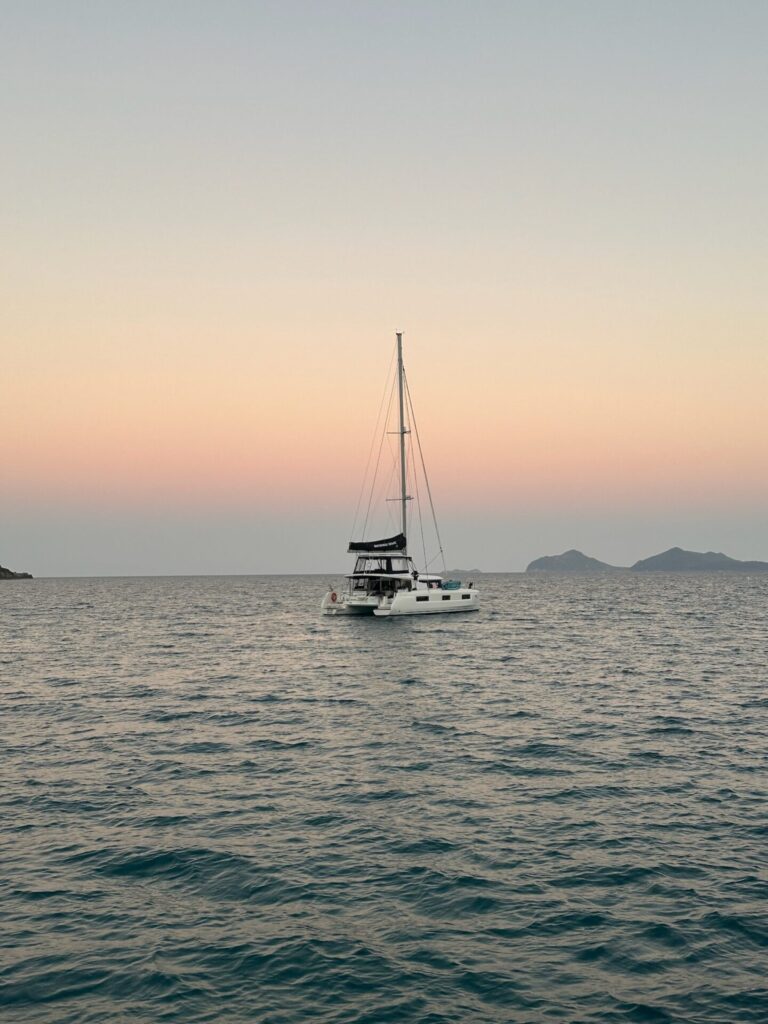
March to May (Autumn) – Underrated & Gorgeous
March
Rain starts to ease up toward the end of the month, though it’s still warm and muggy. The cyclone risk drops slightly, and you may luck out with a few clearer days. Still stinger season, and March is generally quiet, with no major holidays or school breaks.
April
April marks the tail end of the wet season. You’ll still get the occasional storm, but skies start clearing, and the humidity begins to drop. It’s also when the southeast trade winds start to kick in, which makes it a great time for sailing. Expect lush green islands after all that rain, but keep in mind that Easter school holidays can bring a spike in families and tour bookings.
May
One of the best months to visit, hands down. The weather is dry and mild, with temps around 25°C, little rain, and calmer seas. The trade winds are steady but not too strong, so it’s ideal for sailing trips or hiring your own catamaran. It’s also just before the peak season rush, so you get dreamy weather without the crowds. No school holidays in sight either.


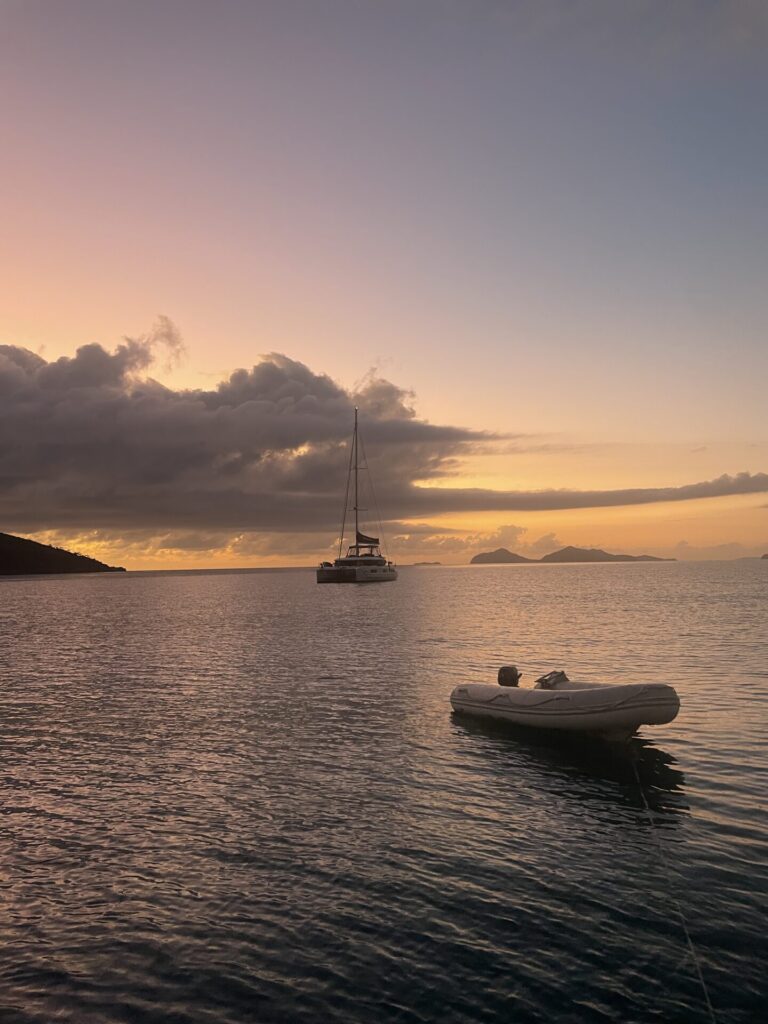
June to August (Winter) – Whale Season & Excellent Visibility for Snorkeling
June
Dry, sunny, and full of perfect beach days. June kicks off the official whale season, so there’s a HUGE chance you’ll spot humpbacks during a cruise. Our skipper told us they were almost a hazard with so many whales breaching in June this past year.
It’s still a great time for sailing, especially early in the month before the winter school holidays begin. The weather is comfortable, the stingers are (mostly) gone, and the reef visibility is top-notch.
July
July is peak dry season, sunny weather, low humidity, cool mornings, and perfect sailing winds. It’s technically the middle of winter, so you might catch some cooler days, but usually it stays around 20 Celsius. The sea is calm, the air crisp, and the crowds pick up with winter school holidays in full swing. If you’re planning a trip, book early to snag spots on popular tours.
August
August was pure magic for us. My 30th birthday landed smack in the middle of winter back in Perth, but the Whitsundays were all sunshine and warmth. No rain, no stingers, and a few whales were still migrating, so we were able to see a few of them breach. It was seriously epic. Plus, with school holidays easing up, the crowds felt just right. Honestly, I couldn’t have asked for better weather for my birthday.
Also, keep in mind that we booked this about 3 months in advance, as certain tours in August were already full.
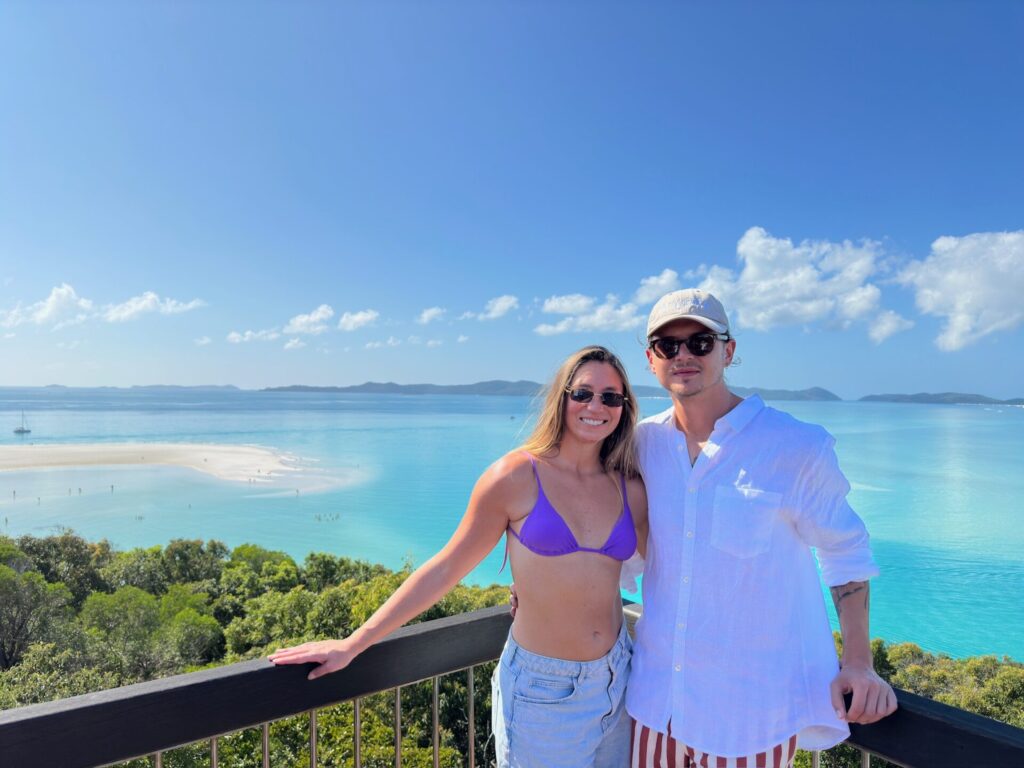
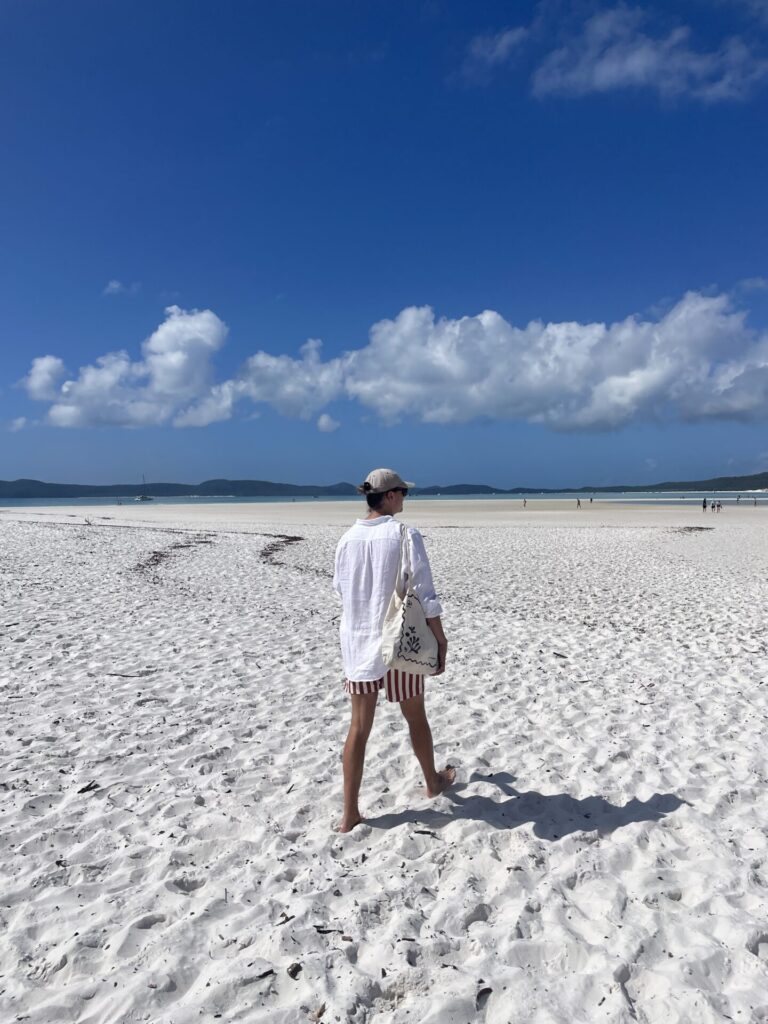

September to November (Spring) – The Perfect Shoulder Season
September
September might actually be the best month to visit. The weather warms up a bit, think mid-20s compared to June to August’s cooler 20-24°C, while still staying dry and mostly calm. It’s quieter after the school holiday rush, and the sailing conditions soften to something a bit more chill. Basically, it’s like the Whitsundays’ sweet spot before the heat ramps up.
October
October starts heating up, and humidity creeps back in. It’s still mostly dry, but the stingers return, so swim smart. The crowds thin out after school holidays, making it a decent shoulder month if you don’t mind the warmer temps. Sailing’s still doable, but the winds can get a bit unpredictable.
November
November is when things get sticky. The wet season edges closer, and rain showers start popping up more regularly. Stinger season kicks back into full gear, so stinger suits are a must for swimming. If you’re chasing quiet beaches and don’t mind the risk of showers, November can work; just pack accordingly.
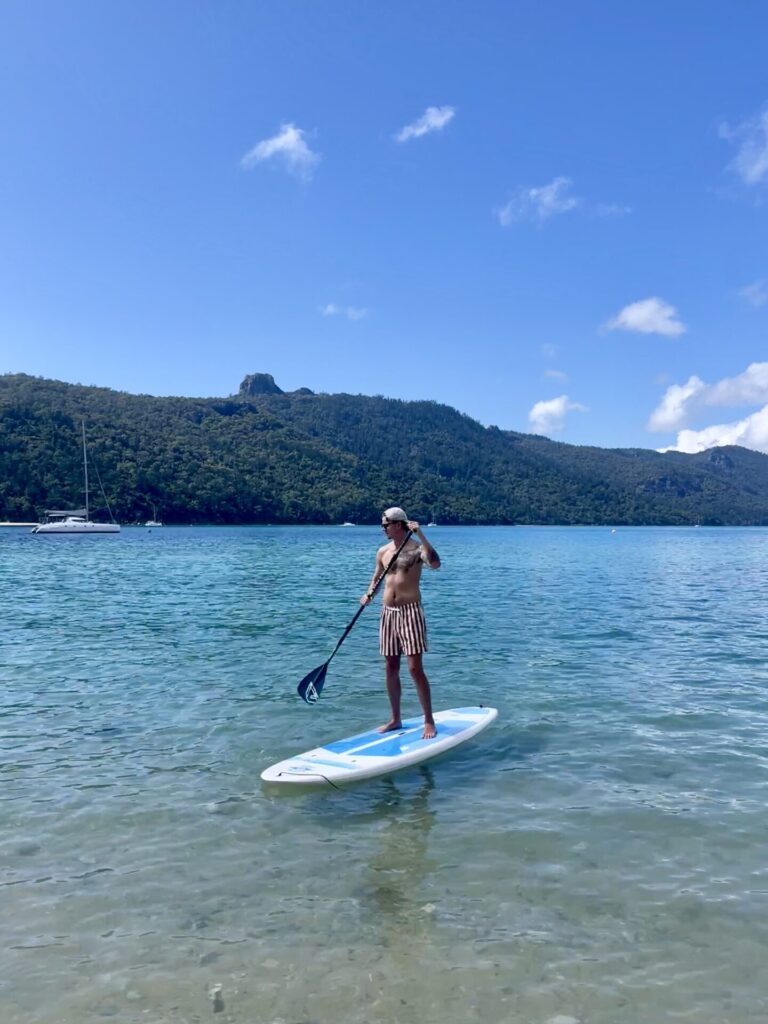
Special Events & Experiences in Whitsundays Island by Season
Humpback Whale Season in Whitsundays (June – September)
If you’re visiting between June and September, keep your eyes peeled for humpback whales breaching and launching themselves out of the water. Oliver and I were lucky to catch a few whales still migrating on my birthday trip in August. We saw a momma and her baby showing off, and it seriously almost made me cry. This is such an amazing time to visit the whitsundays
Hamilton Island Race Week (August)
August is not just birthday month vibes, it’s also when Hamilton Island Race Week fires up. This is a huge sailing event attracting crews from around the world. Even if you’re not into sailing, the buzz around the island is electric with parties, events, and tons of boat action to watch.
Coral Spawning (October/November-ish)
This is one of the most unique natural events in the Whitsundays. Around October or November, the coral reefs synchronize their spawning, creating an underwater spectacle. It’s a magical time for divers and snorkelers, but keep in mind this also coincides with stinger season!
Best Months for Sailing the Whitsundays
The sweet spot for sailing is from April to September, when the southeast trade winds are steady but not too fierce. May and June stand out as prime months with mild weather and calm seas. During our sailing tourin August, we were only able to sail properly once because it was so calm.
So if you’re really wanting to put the sails up, I recommend going earlier in the season, in May or June.
Stinger Season in the Whitsundays: When and How to Be Safe
Stinger season runs roughly from November through May, peaking in the wettest months. Box jellyfish and other dangerous stingers make swimming risky without protective gear. If you’re on a tour, which you most likely will be, they’ll provide stinger suits, so no need to bring your own. Still, always check local advice, wear your suit when recommended, and stick to designated swimming areas.
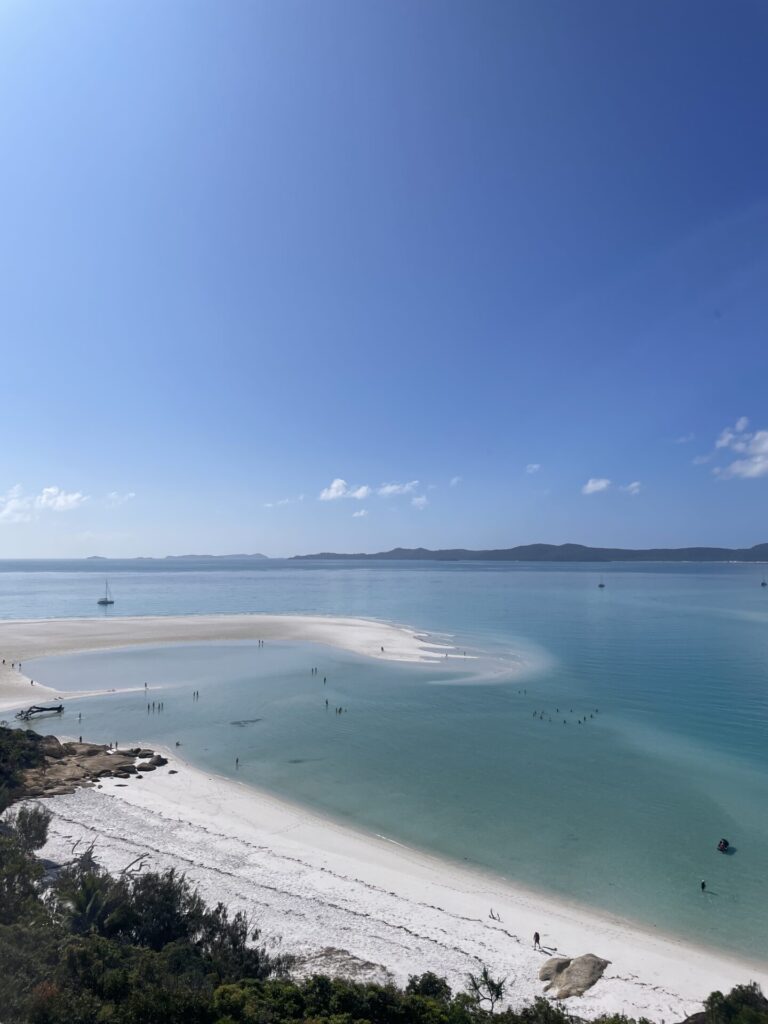
When is the worst time to visit Whitsundays
For us, we didn’t really have an option; we had to do our trip in August and just got lucky that it lined up with one of the best times to visit the Whitsundays. But honestly, the Whitsundays are a year round destination and regardless of when you’ll go, you’ll have an amazing time.
Still, I’d hate to fly 27+ hours only to be stuck inside because of a storm, so I always like to include when not to go if you can avoid it.
Cyclone Season (Usually January to March)
This is the wettest and wildest part of the year. Cyclones aren’t guaranteed every year, but they’re a real risk during these months. Heavy rains, strong winds, and rough seas can put a serious damper on your plans.
For anyone flying halfway across the world like we did, landing in the middle of a cyclone would be a total nightmare. However, this is one of the best times to visit the West Coast of Australia, or the South, with Sydney & Melbourne in full summer mode!
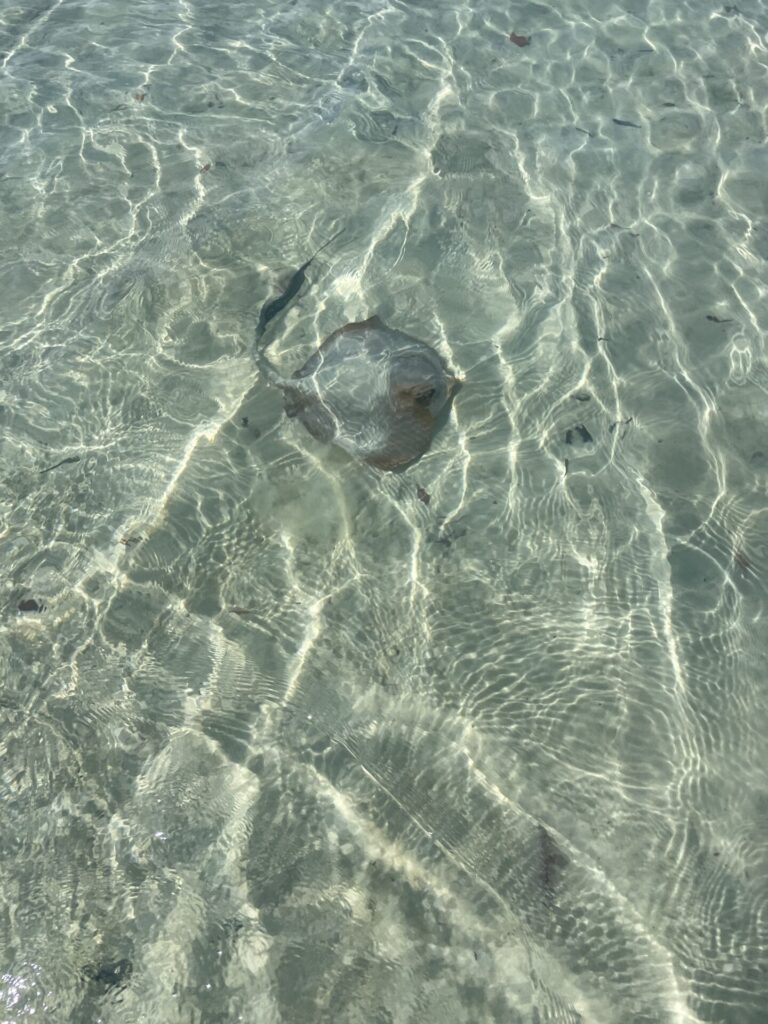
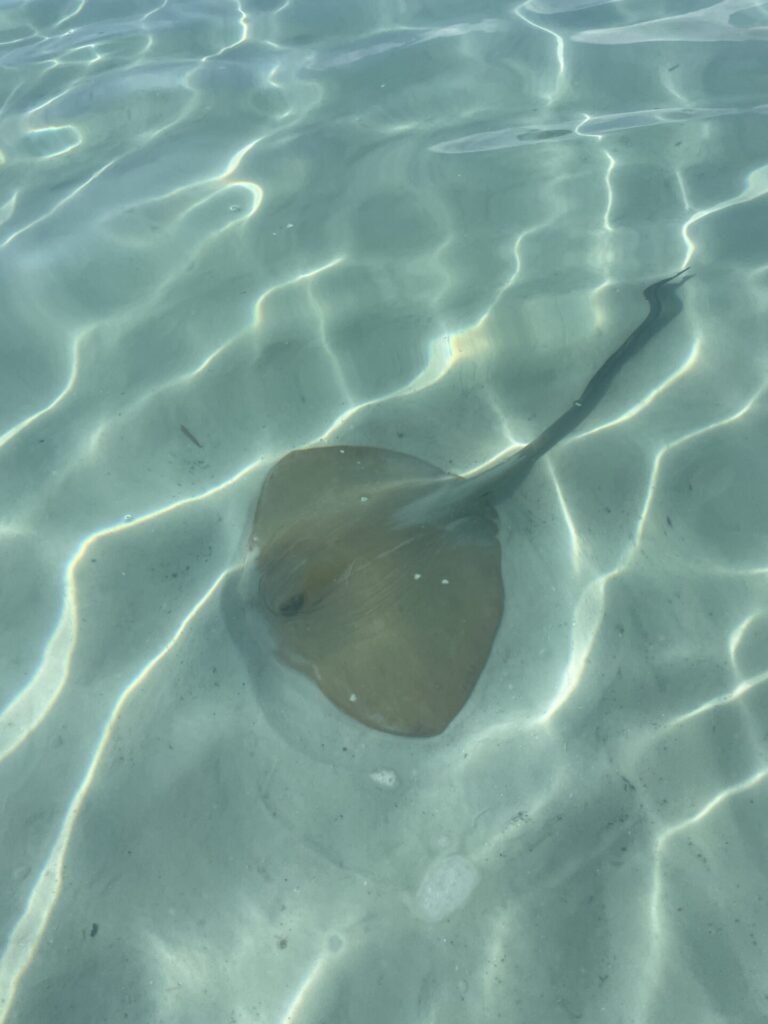
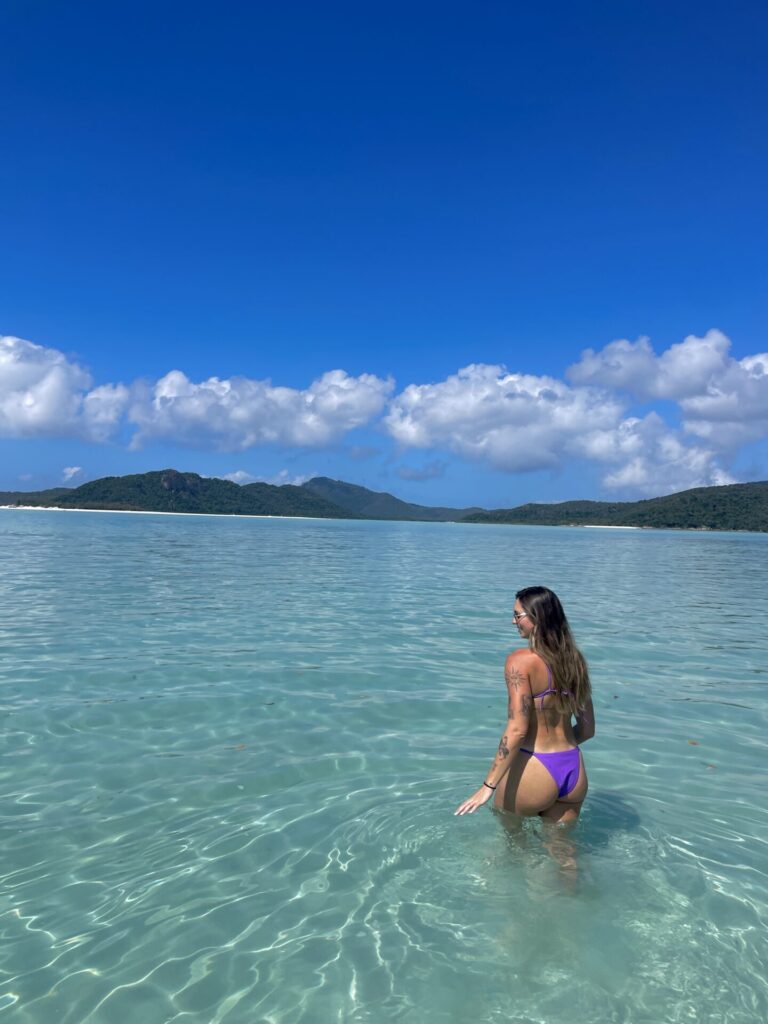
Crowds and Pricing During Aussie School Holidays
The Whitsundays get packed during Australian school holidays, which means higher prices and busier tours. Here are the main breaks to watch out for along the Gold Coast & North Queensland:
- Easter Break: April 5th to April 21st
- Mid-Year Break: June 19th to July 13th
- Summer Break: December 22nd to January 27th
If you’re not into crowds and want a more relaxed experience, it’s best to avoid these periods.
If You Hate Humidity, Avoid Peak Summer
December through February brings hot, sticky, and humid weather. For those who prefer a comfortable breeze over sweating through every outfit, this is probably not the best time. Plus, with stinger season in full swing, swimming isn’t always an option without a protective suit.
Quick Decision Guide: What’s the Best Time for You To Visit The Whitsunday Islands?
- Want fewer people? Try autumn (April–May) or spring (September–early November). The crowds thin out, and you get the Whitsundays pretty much to yourself.
- Chasing marine life? Winter (June–August) is your winner. That’s prime time for whale watching and spotting cool underwater action.
- On a budget? Travel in the shoulder seasons (March–May or September–early December). You’ll find better deals just outside the peak school holidays and summer months.
- Trying to pack it all in? Spring (September–early November) is the happy medium. Great weather, manageable crowds, and lots to see and do.
FAQ: Best Time to Visit the Whitsundays Islands
What is the best time of year to go to the Whitsunday Islands Australia?
The best time to visit the Whitsundays is generally July to September. The weather is dry and consistently sunny, the water is clear, and it’s peak whale season. If you prefer slightly warmer weather, September is ideal. April–May and October–early November are also great low season options with less tourism and good sailing conditions.
How long should you spend in the Whitsundays?
If you’re short on time, even 2–3 days can be amazing, especially if you book a sailing tour or a reef trip. But if you can swing it, 4–5 days gives you time to explore multiple islands, relax at Airlie Beach, and not feel rushed.
Are the Whitsundays worth visiting?
Absolutely. Between the reef, the islands, the beaches, and the wildlife, it’s one of the most stunning parts of Australia. For us, it was one of the most memorable parts of our entire East Coast road trip. It really does live up to the hype.
What islands can you stay on in the Whitsundays?
There are a few islands with accommodation options. Hamilton Island is the most popular, with everything from luxury resorts to family-friendly hotels. Hayman Island is ultra-luxury with only one stunningly private hotel and one mega yacht to stay on! But, like us, most people base themselves in Airlie Beach and explore the islands on day trips or overnight sails.
When is jellyfish season in the Whitsundays?
Jellyfish, including potentially dangerous box jellyfish and irukandji, are more common during stinger season, which runs from November to May. If you’re swimming or snorkeling during these months, always wear a stinger suit. Tour companies will provide them, and it’s worth using one even if you’re just wading in.
When is the best time to visit Airlie Beach?
May to October, that’s when it’s dry season with sunny weather and low humidity.
When is the best time to visit Hamilton Island?
May to September with pleasant temperatures, clear skies, and less chance of rain.
Is April a good time to visit Whitsundays?
Yes, it’s warm, less crowded, and just before peak season begins.
Final Thoughts on the Best Time to Visit Whitsundays Islands
Visiting the Whitsundays is seriously a once-in-a-lifetime thing—or it was for us. I’ll never forget that trip: sailing to Whitehaven Beach, snorkeling in the Great Barrier Reef… it all felt completely magical. And honestly, even if the weather hadn’t been perfect, I still think we would’ve had an incredible time.
That said, we do want you to have the best possible trip. And personally, I think that means aiming for July to September. Whether you’re hoping to spot whales (closer to July) or want warmer weather with fewer crowds (go for September), this window gives you the best of both worlds. No matter what you choose, make sure to book early, and have an awesome time!!
Check Out My Other East Coast Australia Guides
East Coast Australia Itinerary: My Ultimate 2 Week Itinerary on Australias East Coast
Cafes in Airlie Beach: My Top 6 Cafes in Airlie Beach
How to get to Whitehaven Beach: How to get to Whitehaven Beach Travel Guide
Sailing the Whitsundays: My Sailing the Whitsundays Guide 2025
Airlie Beach Restaurants: My Top 8 Restaurants in Airlie Beach
Couples Getaway NSW: My Favorite Romantic Weekend Destinations
Holiday Homes Airlie Beach: 11 Amazing Holiday Homes in Airlie Beach
Whitehaven Beach Day Trips: My Top 5 Whitehaven Beach Day Trips
Airlie Beach Itinerary: My Perfect 3-5 Day Airlie Beach Itinerary
Where to Stay in Airlie Beach Australia: The Best Areas & Hotels in Airlie Beach
Airlie Beach Caravan Parks: The 5 Best Airlie Beach Caravan Parks
Airlie Beach Day Trips: 8 Amazing Day Trips from Airlie Beach
The Best Beaches in Noosa: Here are my favorite Noosa Beaches
Things to Do in Noosa: My Favorite Activities in Noosa Australia
Is Noosa Worth Visiting?: My Honest Take on Noosa Australia
Best Places to Eat in Noosa: My Top Restaurants & Cafes in Noosa
Noosa Itinerary: How I Spent 3 Days in Noosa Australia
Where to Stay in Noosa Australia: My Favorite Areas & Hotels
Best Cafes in Noosa: These are my favorite coffee shops in Noosa
Australia Travel Insurance: The Best Travel Insurance for Australia
Related Articles
The BEST Travel Insurance for Australia Working Holiday: What You Need + What It Costs
I just finished my first year on a working holiday visa in Australia, and while it was the time of my life, the first few weeks were stressful. Sorting out visas, finding accommodation, and securing farm work, there was a lot to juggle. One thing I’m really glad I had sorted out before I left…
The 7 Best Cafes in Noosa: My Guide to the Top Coffee Spots
Australia has completely ruined me, in the best way, when it comes to coffee. Even the McDonald’s coffee here is better than what you’ll find at most places in the US. And honestly, it’s usually cheaper too. But we’re not here for a Macca’s drive-thru, we want that good goo, and Noosa takes its café…
Where to Stay in Noosa Australia: My TOP 4 Areas and Best Hotels in 2025!
Traveling the East Coast of Australia was honestly one of the highlights of my LIFE!! Yes, I know that’s a big statement, but I stand by it. And I was especially pumped about Noosa. This little town on the Sunshine Coast is everything Aussie dreams are made of, morning surfs, coastal walks on the best…
